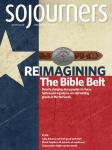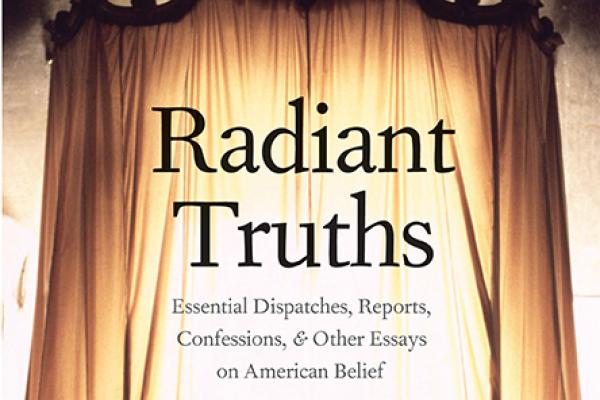JEFF SHARLET, author of nonfiction books about faith including New York Times best-seller The Family and Sweet Heaven When I Die, isn’t so much interested in religion as he is in belief. “That interest sometimes leads me to people who might reject the term religion altogether,” he writes of drinking whiskey with Mormons and marching in Spain with Jewish-American veterans of the Abraham Lincoln Brigade, a volunteer group of up to 40,000 men and women from 52 countries who traveled to fight fascism in the Spanish Civil War.
In his newest book, Radiant Truths, Sharlet collects stories like these, stories about what happens when religious ideas meet social practice. He attributes this concept to anthropologist Angela Zito. In her essay “Religion is Media,” Zito ponders, “What does the term ‘religion,’ when actually used by people, out loud, authorizein the production of social life?” Using Zito’s question as a jumping off point, Sharlet dives into 150 years’ worth of literary journalism at the intersection of religion, culture, and politics.
He admits his own bias; as with most anthologies, his selections are personal favorites, and not wholly representative of the nation’s religious pluralism. Sharlet also explains each selection in a short interlude between pieces, a helpful cohesion if, like me, you read the book from front to back. Journeying from a 19th century Purim to a 20th century healing ceremony conducted by a traditional Laotian Hmong shaman is an exhilarating adventure, but one that requires a chaperone.
The anthology begins in 1863 with Walt Whitman, moving through the end of the 1800s with writing by Thoreau and Twain. The 20th century opens with a fierce female duo, Sara Jeannette Duncan and Jane Addams, writing about historic Hull House. By the middle of the last century, we’ve met boy preacher James Baldwin and been introduced to Louisiana voodoo by Zora Neale Hurston.
As cultural revolution took hold in the 1960s and ’70s, the groundwork was being laid for what was later dubbed “new journalism,” the idea that reporters can also be subjects in the story—and the idea that trying to be objective, rather than immersed with one’s sources, is perhaps impossible. This helps prepare readers to plunge into observant religious Judaism circa 1977 with rock music and cultural critic Ellen Willis, and into late 1980s, pre-Jean Bertrand Aristide-as-president Haiti, when the liberal theologian was still a parish priest. Though it was published in 1995, Dennis Covington’s dispatch about snake-handling county-fair preachers in Alabama feels timeless, as though it could have been written during any decade of the last century.
Sharlet also includes a piece of his own reporting on paganism in the Midwest circa 2000. But he holds up John Jeremiah Sullivan’s 2004 GQreporting on the Christian music Cross-Over Festival as one of the best pieces of religious journalism in years. He proclaims that “Upon This Rock” captures the first decade of this century as well as Joan Didion’s Slouching Toward Bethlehem came to represent so much about the 1960s. And he’s right.
Radiant Truths is a dizzying collection, not least because it might feel incomprehensibly broad without a gentle narrator to guide readers through decades of poetry, reporting, and reflections on social upheaval and subtle cultural shifts. It also pulls together a number of dense texts that require a graduate-level knowledge of world history and religious practice in order to fully appreciate the history collected here. Thankfully for us all, Sharlet offers his knowledgeable explanations along with thorough and thoughtful curation.

Got something to say about what you're reading? We value your feedback!
